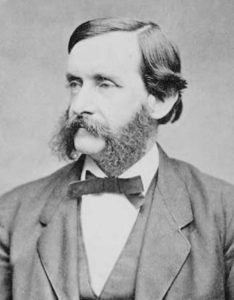
Thomas Higginson
*On this date, in 1823, Thomas Higginson was born. He was a white-American Unitarian minister, author, abolitionist, and soldier.
Thomas Wentworth Higginson was born in Cambridge, MA. He entered Harvard College at age thirteen and was elected Phi Beta Kappa at sixteen. He graduated in 1841 and was a schoolmaster for two years. In 1842, he became engaged to Mary Elizabeth Channing. He then studied theology at the Harvard Divinity School. At the end of his first year of divinity training, he withdrew from the school to turn his attention to the abolitionist cause.
He was active in the American Abolitionism movement during the 1840s and 1850s, identifying himself with disunion and militant abolitionism. He was a member of the Secret Six, which supported John Brown. He spent the subsequent year studying and fighting against the expected war with Mexico. Believing that war was only an excuse to expand slavery and the slave power, Higginson wrote anti-war poems and went door-to-door to get signatures for anti-war petitions. During the American Civil War, he served as colonel of the 1st South Carolina Volunteers, the first federally authorized Black regiment, from 1862 to 1864.
After the war, Higginson devoted much of his life to fighting for the rights of freed slaves, women, and other disfranchised peoples; he devoted most of his time to literature. His writings show a deep love of nature, art, and humanity. In his Common Sense About Women (1881) and his Women and Men (1888), he advocated equality of opportunity and equality of rights for the two sexes. In 1891, Higginson became one of the founders of the Society of American Friends of Russian Freedom (SAFRF).
Thomas Higginson died on May 9, 1911. He is remembered as a correspondent and literary mentor to the poet Emily Dickinson. Higginson is buried in Cambridge Cemetery in Cambridge, Massachusetts.